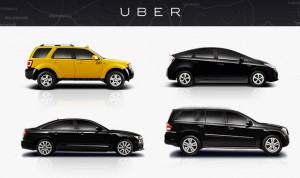By George Crowley ’16, Tech Desk Editor
In the past few years, the use of the internet as a crowdsourcing platform has increased, bringing people together from across the world, and decreasing inefficiencies. From crowd funding platforms such as Kickstarter, to group buying services such as Massdrop, the power of connecting a large group of people to decrease overhead becomes evident. But most of those services only connect people over the internet, not bringing them together in the real world. Uber changes all of that. It takes something that for ages has been a full time job and reduces it to something you can do on your off day, or after work to earn a little extra money. Uber drivers have no required hours, no required quotas; they can work as much or as little as they want. However, generally, drivers tend to know good nights to work, for example, Saturday night downtown, or during a big concert at Riverbend. Because of this, a driver is rarely far away when you need one, and drivers don’t have to be out during slow hours. Although some more rural areas might be slow to adopt Uber, large cities such as New York and San Francisco have an enormous amount of Uber drivers, and even our humble Cincinnati has enough that you’ll never be waiting long. The app that makes this all possible is remarkably simple; it utilizes the GPS feature on modern smartphones to tell the driver where you are, and you where your driver is. You simply open your app, and you are given a choice between several Uber services, usually between the basic Uber X sedan, the Uber SUV, and the Uber Black, a higher end sedan. You select the service you want and summon the driver. The app keeps you up to date with an estimated time of arrival for the driver, and also shares your phone numbers with each other, in case GPS fails you. “Now this all sounds great,” you might be saying, “but how can I be sure that my driver won’t be awful?” Uber only allows drivers above the age of 21, and does a small background check on them before they can start driving, so you don’t have to worry about getting picked up by an acne-ridden high schooler. Additionally, customers can review drivers, and drivers with consistently low reviews are blacklisted. Not only that, but only cars made after 2006 are allowed in the service, so you don’t have to worry about getting picked up in your granddad’s clunker. So all of this sounds great on paper, but how does it play out in real life? Well, I went ahead and tried out Uber so you don’t have to.
On this particular Monday, I needed a ride down to UC for swim practice and my carpool had bailed, leaving me stranded at school. I pulled out my phone, standing on the dining terrace, and selected a driver only 10 minutes away, in Kenwood. The app gave me his estimated time of arrival; 10 minutes, and told me the car he would be driving, an Infiniti sedan. 10 minutes later, sure enough, a silver Infiniti pulled up outside. I waved to the driver and hopped in. Along the drive down to UC he drove smoothly and stuck to the speed limits, never once driving unsafely. He was also a pretty interesting guy, so conversation was not lacking on the ride. Most of my Uber rides have gone as smoothly as that first one, although I’ve taken one or two where the driving felt a tad unsafe, cruising outside the lane a little too, or forgetting the turn signal one too many times. On a different note, I also had a driver go above and beyond for me, calling me to help figure out where I was in the pouring rain. Overall, my experience with Uber has been very positive, and I would encourage everyone to at least download the app on your phone. It gives great peace of mind to know that if you end up stranded somewhere, a safe ride is only a click or two away on your phone.



